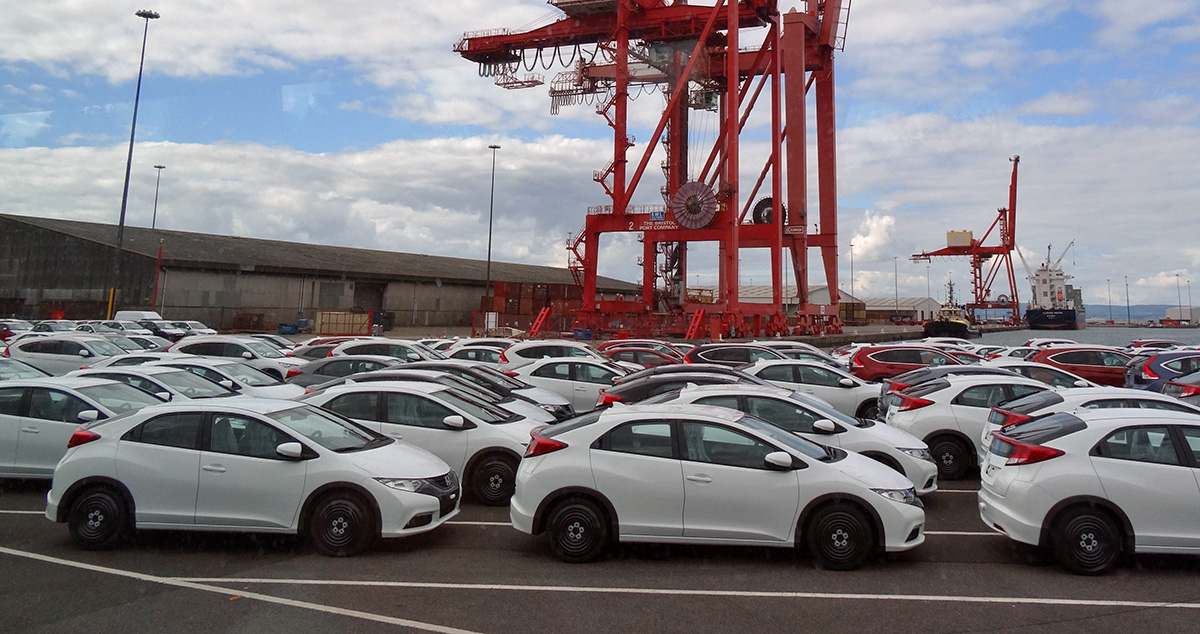Bubbles
 Speculation in markets can lead to wild swings in prices as exuberance drives up prices and
Speculation in markets can lead to wild swings in prices as exuberance drives up prices and
pessimism leads to price crashes. When the rise in price exceeds underlying fundamentals, such as profit, the result is a bubble. And bubbles burst.
There have been many examples of bubbles throughout history. One of the most famous is that of tulips in the 17th century. As Box 2.4 in Essential Economics for Business (6th edition) explains:
Between November 1636 and February 1637, there was a 20-fold increase in the price of tulip bulbs, such that a skilled worker’s annual salary would not even cover the price of one bulb. Some were even worth more than a luxury home! But, only three months later, their price had fallen by 99 per cent. Some traders refused to pay the high price and others began to sell their tulips. Prices began falling. This dampened demand (as tulips were seen to be a poor investment) and encouraged more people to sell their tulips. Soon the price was in freefall, with everyone selling. The bubble had burst .
Another example was the South Sea Bubble of 1720. Here, shares in the South Sea Company, given a monopoly by the British government to trade with South America, increased by 900% before collapsing through a lack of trade.
Another, more recent, example is that of Poseidon. This was an Australian nickel mining company which announced in September 1969 that it had discovered a large seam of nickel at Mount Windarra, WA. What followed was a bubble. The share price rose from $0.80 in mid-1969 to a peak of $280 in February 1970 and then crashed to just a few dollars.
Other examples are the Dotcom bubble of the 1990s, the US housing bubble of the mid-2000s and BitCoin, which has seen more than one bubble.
Bubbles always burst eventually. If you buy at a low price and sell at the peak, you can make a lot of money. But many will get their fingers burnt. Those who come late into the market may pay a high price and, if they are slow to sell, can then make a large loss.
GameStop shares – an unlikely candidate for a bubble
 The most recent example of a bubble is GameStop. This is a chain of shops in the USA selling games, consoles and other electronic items. During the pandemic it has struggled, as games consumers have turned to online sellers of consoles and online games. It has been forced to close a number of stores. In July 2020, its share price was around $4. With the general recovery in stock markets, this drifted upwards to just under $20 by 12 January 2021.
The most recent example of a bubble is GameStop. This is a chain of shops in the USA selling games, consoles and other electronic items. During the pandemic it has struggled, as games consumers have turned to online sellers of consoles and online games. It has been forced to close a number of stores. In July 2020, its share price was around $4. With the general recovery in stock markets, this drifted upwards to just under $20 by 12 January 2021.
Then the bubble began.
Hedge fund shorting
Believing that the GameStop shares were now overvalued and likely to fall, many hedge funds started shorting the shares. Shorting (or ‘short selling’) is where investors borrow shares for a fee and immediately sell them on at the current price, agreeing to return them to the lender on a specified day in the near future (the ‘expiration date’). But as the investors have sold the shares they borrowed, they must now buy them at the current price on or before the expiration date so they can return them to the lenders. If the price falls between the two dates, the investors will gain. For example, if you borrow shares and immediately sell them at a current price of £5 and then by the expiration date the price has fallen to $2 and you buy them back at that price to return them to the lender, you make a £3 profit.
But this is a risky strategy. If the price rises between the two dates, investors will lose – as events were to prove.
The swarm of small investors
 Enter the ‘armchair investor’. During lockdown, small-scale amateur investing in shares has become a popular activity, with people seeking to make easy gains from the comfort of their own homes. This has been facilitated by online trading platforms such as Robinhood and Trading212. These are easy and cheap, or even free, to use.
Enter the ‘armchair investor’. During lockdown, small-scale amateur investing in shares has become a popular activity, with people seeking to make easy gains from the comfort of their own homes. This has been facilitated by online trading platforms such as Robinhood and Trading212. These are easy and cheap, or even free, to use.
What is more, many users of these sites were also collaborating on social media platforms, such as Reddit. They were encouraging each other to buy shares in GameStop and some other companies. In fact, many of these small investors were seeing it as a battle with large-scale institutional investors, such as hedge funds – a David vs. Goliath battle.
With swarms of small investors buying GameStop, its share price surged. From $20 on 12 January, it doubled in price within two days and had reached $77 by 25 January. The frenzy on Reddit then really gathered pace. The share price peaked at $468 early on 28 January. It then fell to $126 less than two hours later, only to rise again to $354 at the beginning of the next day.
Many large investors who had shorted GameStop shares made big losses. Analytics firm Ortex estimated that hedge funds lost a total of $12.5 billion in January. Many small investors, however, who bought early and sold at the peak made huge gains. Other small investors who got the timing wrong made large losses.
And it was not just GameStop. Social media were buzzing with suggestions about buying shares in other poorly performing companies that large-scale institutional investors were shorting. Another target was silver and silver mines. At one point, silver prices rose by more than 10% on 1 February. However, money invested in silver is huge relative to GameStop and hence small investors were unlikely to shift prices by anything like as much as GameStop shares.
Amidst this turmoil, the US Securities and Exchange Commission (SEC) issued a statement on 29 January. It warned that it was working closely with other regulators and the US stock exchange ‘to ensure that regulated entities uphold their obligations to protect investors and to identify and pursue potential wrongdoing’. It remains to be seen, however, what it can do to curb the concerted activities of small investors. Perhaps, only the experience of bubbles bursting and the severe losses that can result will make small investors think twice about backing failing companies. Some Davids may beat Goliath; others will be defeated.
Articles
- GameStop: The competing forces trading blows over lowly gaming retaile
Sky News (30/1/21)
- Tempted to join the GameStop ‘angry mob’? Lessons on bubbles, market abuse and stock picking from the investment experts… including perma-bear Albert Edwards
This is Money, Tanya Jefferies (29/1/21)
- A year ago on Reddit I suggested investing in GameStop. But I never expected this
The Guardian, Desmund Delaney (29/1/21)
- The real lesson of the GameStop story is the power of the swarm
The Guardian, Brett Scott (30/1/21)
- GameStop: What is it and why is it trending?
BBC News, Kirsty Grant (29/1/21)
- GameStop: Global watchdogs sound alarm as shares frenzy grows
BBC News (30/1/21)
- The GameStop affair is like tulip mania on steroids
The Guardian, Dan Davies (29/1/21)
- GameStop news: Short sellers lose $19bn as Omar says billionaires who pressured apps should go to jail
Independent, Andy Gregory, Graig Graziosi and Justin Vallejo (30/1/21)
- Robinhood tightens GameStop trading curbs again as SEC weighs in
Financial Times, Michael Mackenzie, Colby Smith, Kiran Stacey and Miles Kruppa (29/1/21)
- SEC Issues Vague Threats Against Everyone Involved in the GameStop Stock Saga
Gizmodo, Andrew Couts (29/1/21)
- SEC warns it is monitoring trade after GameStop surge
RTE News (29/1/21)
- GameStop short-squeeze losses at $12.5 billion YTD – Ortex data
Reuters (1/2/21)
- GameStop: I’m one of the WallStreetBets ‘degenerates’ – here’s why retail trading craze is just getting started
The Conversation, Mohammad Rajjaque (3/2/21)
- What the GameStop games really mean
Shares Magazine, Russ Mould (4/2/21)
Data
Questions
- Distinguish between stabilising and destabilising speculation.
- Use a demand and supply diagram to illustrate destabilising speculation.
- Explain how short selling contributed to the financial crisis of 2007/8 (see Box 2.7 in Economics (10th edition) or Box 3.4 in Essentials of Economics (8th edition)).
- Why won’t shares such as GameStop go on rising rapidly in price for ever? What limits the rise?
- Find out some other shares that have been trending among small investors. Why were these specific shares targeted?
- How has quantitative easing impacted on stock markets? What might be the effect of a winding down of QE or even the use of quantitative tightening?
 Each week, BBC Radio 4 broadcasts readings from a book serialised in five 15-minute episodes. In the week beginning 18 January 2021, the readings were from English Pastoral: An Inheritance by James Rebanks, a farmer from the Cumbrian fells. His farm is relatively small, covering 185 acres.
Each week, BBC Radio 4 broadcasts readings from a book serialised in five 15-minute episodes. In the week beginning 18 January 2021, the readings were from English Pastoral: An Inheritance by James Rebanks, a farmer from the Cumbrian fells. His farm is relatively small, covering 185 acres.
He has attempted to make it much more sustainable and less intensive, reintroducing traditional Herdwick sheep, having a mixture of cows and sheep rather than just sheep, a greater sub-division of fields, and more natural scrubland, peatbogs and trees. As a result, soil quality has improved and there has been an explosion of biodiversity, with an abundance of wild flowers and insects.
Apart from being an autobiography of his time as a farmer and his attempt to move towards more traditional methods, the book examines broader issues of agricultural sustainability. It looks at the pressures of consumers wanting cheap food, the market power of supermarkets and wholesalers, the cost pressures on farmers pushing them towards monoculture to achieve economies of scale, and the role of the agrichemicals industry promoting fertilisers, feeds and pesticides which bring short-term financial gains to farmers, but which cause longer-term damage to the land and to biodiversity.
Rebanks has gained quite a lot of media attention after the publication of his first book, The Shepherd’s Life, including being one of the guests on Desert Island Discs and the subject of an episode of The Food Programme.
Listen to the Food Programme podcast and try answering the questions, which are all based on the podcast in the order of the points made in the interview.
Podcast
Reviews
Questions
- What are the incentives of an unregulated market for food that result in monoculture and a loss of biodiversity?
- To what extent are consumers responsible for changes in farming methods?
- Have the changes helped the urban poor?
- How is the monopsony power of supermarkets and food wholesalers impacting on food production and the pattern of agriculture?
- There are various (private) economies of scale in food production, but these often involve substantial external costs and long-term private costs too. How does this impact on land use?
- What are some of the limits of technology in increasing crop, meat and dairy yields?
- Will more recent changes in the pattern of food consumption help to increase mixed farming and biodiversity?
- Is it ‘rational’ for many farmers to continue with intensive farming with high levels of artificial fertilisers and pesticides?
- Is diversity in farming across farms within a local area a public good? If so, how could such diversity be achieved?
- How can farmers be encouraged to think and act holistically?
- Is there a trade-off between food output and biodiversity?
- What are the dangers in the UK reaching an agricultural trade deal with the USA?
- What are the benefits and costs of encouraging local food markets?
 Back in November, when Joe Biden had just been elected, we considered some of his proposed policies to tackle climate change (see A new era for climate change policy?). On 20th January, the day of his inauguration, he signed 17 executive orders overturning a range of policies of the Trump presidency. Further executive orders followed. Some of these related directly to climate change.
Back in November, when Joe Biden had just been elected, we considered some of his proposed policies to tackle climate change (see A new era for climate change policy?). On 20th January, the day of his inauguration, he signed 17 executive orders overturning a range of policies of the Trump presidency. Further executive orders followed. Some of these related directly to climate change.
The first was to cancel the Keystone XL oil pipeline project. If it had gone ahead, it would have transported 830 000 barrels of oil per day from the Alberta tar sands in Canada to refineries on the Gulf Coast of Texas. It would have involved building a new pipeline from Alberta to Nebraska, where it would have linked to an existing pipeline to Texas. Extracting oil from tar sands is a particularly dirty process, involves cutting down large areas of forest (a carbon sink) and total emissions are around 20% greater per barrel than from conventional crude.
 The pipeline would have cut across First Nations land and any spills would have been highly toxic to the local environment. In terms of profitability, returns on tar sands oil extraction and transportation are very low. This is likely to remain the case as oil prices are likely to remain low, with greater global energy efficiency and the switch to renewables.
The pipeline would have cut across First Nations land and any spills would have been highly toxic to the local environment. In terms of profitability, returns on tar sands oil extraction and transportation are very low. This is likely to remain the case as oil prices are likely to remain low, with greater global energy efficiency and the switch to renewables.
Critics of Biden’s decision argue that the pipeline project would have created some 5000 to 6000 temporary jobs in the USA during the two-year construction phase. Also they claim that it would have contributed to greater energy security for the USA.
 The second executive order was to rejoin the Paris Climate Agreement, a process that will take 30 days. Rejoining will involve commitments to cut greenhouse gas emissions and the adoption of various measures to bring this about. During the election campaign, Biden pledged to achieve economy-wide net-zero emissions no later than 2050. As we saw in the previous blog, under Biden the USA will play a leading role in the November 2021 UN COP26 climate change conference in Glasgow.
The second executive order was to rejoin the Paris Climate Agreement, a process that will take 30 days. Rejoining will involve commitments to cut greenhouse gas emissions and the adoption of various measures to bring this about. During the election campaign, Biden pledged to achieve economy-wide net-zero emissions no later than 2050. As we saw in the previous blog, under Biden the USA will play a leading role in the November 2021 UN COP26 climate change conference in Glasgow.
At present, the Paris agreement is for countries to aim to reach a peak of greenhouse gas emissions as soon as possible to achieve a climate neutral world by mid-century. Many countries have have made commitments about when they aim to achieve carbon neutrality, although concrete action is much more limited. It is hoped that the COP26 conference will lead to stronger commitments and actions and that the USA under Biden will play a leading part in driving this forward.
 In addition, to cancelling the Keystone XL pipeline and rejoining the Paris Agreement, the executive orders reversed more than 100 other decisions with negative environmental effects taken by the Trump administration – many overturning environmental measures introduced by previous administrations, especially the Obama administration.
In addition, to cancelling the Keystone XL pipeline and rejoining the Paris Agreement, the executive orders reversed more than 100 other decisions with negative environmental effects taken by the Trump administration – many overturning environmental measures introduced by previous administrations, especially the Obama administration.
These orders included reversing the easing of vehicle emissions standards; stopping reductions in the area of two major national monuments (parks) in Utah; enforcing a temporary moratorium on oil and natural gas leases in Alaska’s Arctic National Wildlife Refuge; and re-establishing a working group on the social costs of greenhouse gasses.
Then there will be new measures, such as adopting strict fuel economy standards and investment in clean public transport. But it remains to be seen how far and fast the Biden administration can move to green the US economy. With the desire for bipartisanship and seeking an end to the divisive policies of Trump, there may be limits to what the new President can achieve in terms of new legislation, especially with a Senate divided 50:50 and only the casting vote of the chair (Kamala Harris as Vice-President) being in Democrat hands.
The articles below consider the various green policies and how likely they are to succeed in their objectives.
Articles
- Climate change: Biden’s first act sets tone for ambitious approach
BBC News, Matt McGrath (20/1/21)
- Biden nixes Keystone XL permit, halts Arctic refuge leasing
The Hill, Rachel Frazin (20/1/21)
- Biden’s return to Paris pact just a first step for U.S. climate action
Reuters, Megan Rowling (20/1/21)
- Court Decision Lets Biden Set New Emissions Rules To Meet Paris Agreement Climate Goals
Forbes, Allan Marks (20/1/21)
- Biden to ‘hit ground running’ as he rejoins Paris climate accords
The Guardian, Oliver Milman (19/1/21)
- What could a Biden-Harris administration mean for the planet?
Euronews, Marthe de Ferrer (20/1/21)
- Ask a Scientist: What Should the Biden Administration and Congress Do to Address the Climate Crisis?
ecoWatch, Elliott Negin (18/1/21)
- Biden marks Day One with burst of orders reversing Trump policies on climate and health
Science Business, Éanna Kelly (21/1/21)
- What Is the Paris Climate Agreement That Joe Biden Will Rejoin, Why Did Donald Trump Leave?
Newsweek, Kashmira Gander (18/1/21)
Questions
- Find out what other environmental policies are being pursued by President Biden and assess their likely effectiveness in achieving their environmental objectives.
- Would policies to reduce carbon emissions necessarily be desirable? How would you assess their desirability?
- When is it best to use the ‘precautionary principle’ when devising environmental policies?
- To what extent is game theory relevant in understanding the difficulties and opportunities of developing internationally agreed policies on carbon reduction?
- If the objective is to tackle global warming, is it better to seek international agreement on limiting the extent of global warming or international agreement on carbon reduction? Explain.
 According to the Brexit trade agreement (the Trade and Cooperation Agreement (TCA)), trade between the EU and the UK will remain quota and tariff free. ‘Quota free’ means that trade will not be restricted in quantity by the authorities on either side. ‘Tariff free’ means that customs duties will not be collected by the UK authorities on imports from the EU nor by the EU authorities on imports from the UK.
According to the Brexit trade agreement (the Trade and Cooperation Agreement (TCA)), trade between the EU and the UK will remain quota and tariff free. ‘Quota free’ means that trade will not be restricted in quantity by the authorities on either side. ‘Tariff free’ means that customs duties will not be collected by the UK authorities on imports from the EU nor by the EU authorities on imports from the UK.
Article ‘GOODS .5: Prohibition of customs duties’ on page 20 of the agreement states that:
Except as otherwise provided for in this Agreement, customs duties on all goods originating in the other Party shall be prohibited.
This free-trade agreement was taken by many people to mean that trade would be unhindered, with no duties being payable. In fact, as many importers and exporters are finding, trade is not as ‘free’ as it was before January 2021. There are four sources of ‘friction’.
Tariffs on goods finished in the UK
 This has become a major area of concern for many UK companies. When a good is imported into the UK from outside the EU and then has value added to it by processing, packaging, cleaning, remixing, preserving, refashioning, etc., under ‘rules of origin’ regulations, it can only count as a UK good if sufficient value or weight is added. The proportions vary by product, but generally goods must have approximately 50% UK content (or 80% of the weight of foodstuffs) to qualify for tariff-free access to the EU. For example, for a petrol car, 55% of its value must have been created in either the EU or UK. Thus cars manufactured in the UK which use many parts imported from Japan, China or elsewhere, may not qualify for tariff-free access to the EU.
This has become a major area of concern for many UK companies. When a good is imported into the UK from outside the EU and then has value added to it by processing, packaging, cleaning, remixing, preserving, refashioning, etc., under ‘rules of origin’ regulations, it can only count as a UK good if sufficient value or weight is added. The proportions vary by product, but generally goods must have approximately 50% UK content (or 80% of the weight of foodstuffs) to qualify for tariff-free access to the EU. For example, for a petrol car, 55% of its value must have been created in either the EU or UK. Thus cars manufactured in the UK which use many parts imported from Japan, China or elsewhere, may not qualify for tariff-free access to the EU.
In other cases, it is simply the question of whether the processing is deemed ‘sufficient’, rather than the imported inputs having a specific weight or value. For example, the grinding of pepper is regarded as a sufficient process and thus ground pepper can be exported from the UK to the EU tariff free. Another example is that of coal briquettes:
The process to transform coal into briquettes (including applying intense pressure) goes beyond the processes listed in ‘insufficient processing’ and so the briquettes can be considered ‘UK originating’ regardless of the originating status of the coal used to produce the briquettes.
In the case of many garments produced in the UK and then sold in retail chains, many of which have branches in both the UK and EU, generally both the weaving and cutting of fabric to make garments, as well as the sewing, must take place in the UK/EU for the garments to be tariff free when exported from the UK to the EU and vice versa.
Precise details of rules of origin are given in the document, The Trade and Cooperation Agreement (TCA): detailed guidance on the rules of origin.
Many UK firms exporting to the EU and EU firms exporting to the UK are finding that their products are now subject to tariffs because of insufficient processing being done in the UK/EU. Indeed, with complex international supply chains, this is a major problem for many importing and exporting companies.
Documentation
Rules of origin require that firms provide documentation itemising what parts of their goods come from outside the UK/EU. Then it has to be determined whether tariffs will be necessary on the finished product. This is time consuming and is an example of the increase in ‘red tape’ about which many firms are complaining. As the Evening Standard article states:
Exporters have to be able to provide evidence to prove the origin of their products’ ingredients. Next year, they will also have to provide suppliers’ declarations too, and EU officials may demand those retrospectively, so exporters need to have them now.
 The increased paperwork and checks add to the costs of trade. Some EU companies are stating that they will no longer export to the UK and some UK companies that they will no longer export to the EU, or will have to set up manufacturing plants or distribution hubs in the EU to handle trade within the EU.
The increased paperwork and checks add to the costs of trade. Some EU companies are stating that they will no longer export to the UK and some UK companies that they will no longer export to the EU, or will have to set up manufacturing plants or distribution hubs in the EU to handle trade within the EU.
Other companies are adding charges to their products to cover the costs. As the Guardian article states:
“We bought a €47 [£42] shelf from Next for our bathroom,” said Thom Basely, who lives in Marseille. “On the morning it was supposed to be delivered we received an ‘import duty/tax’ demand for over €30, like a ransom note. It came as a complete surprise.”
In evidence given to the Treasury Select Committee (Q640) in May 2018, Sir Jon Thompson, then Chief Executive of HMRC, predicted that leaving the single market would involve approximately 200 million extra customs declarations on each side of the UK/EU border at a cost of £32.50 for each one, giving a total extra cost of approximately £6.5bn on each side of the border for companies trading with Europe. Although this was only an estimate, the extra ‘paperwork’ will represent a substantial cost.
VAT
Previously, goods could be imported into the UK without paying VAT in the UK on value added up to that point as VAT had already been collected in the EU. Similarly, goods exported to the EU would already have had VAT paid and hence would only be subject to the tax on additional value added. The UK was part of the EU VAT system and did not have to register for VAT in each EU country.
Now, VAT has to be paid on the goods as they are imported or released from a customs warehouse – similar to a customs duty. This is therefore likely to involve additional administration costs – the same as those with non-EU imports.
Services
The UK is a major exporter of services, including legal, financial, accounting, IT and engineering. It has a positive trade in services balance with the EU, unlike its negative trade in goods balance. Yet, the Brexit deal does not include free trade in services. Some of the barriers to other non-EU countries have been reduced for the UK in the TCA, but UK service providers will still face new barriers which will impose costs. For example, some EU countries will limit the time that businesspeople providing services can stay in their countries to six months in any twelve. Some will not recognise UK qualifications, unlike when the UK was a member of the single market.
 The financial services supplied by City of London firms are a major source of export revenue, with about 40% of these revenues coming from the EU. Now outside the single market, these firms have lost their ‘passporting rights’. These allowed such firms to sell their services into the EU without the need for additional regulatory clearance. The alternative now is for such firms to be granted ‘equivalence’ by the EU. This has not yet been negotiated and even if it were, does not cover the full range of financial services. It excludes, for example, banking services such as lending and deposit taking.
The financial services supplied by City of London firms are a major source of export revenue, with about 40% of these revenues coming from the EU. Now outside the single market, these firms have lost their ‘passporting rights’. These allowed such firms to sell their services into the EU without the need for additional regulatory clearance. The alternative now is for such firms to be granted ‘equivalence’ by the EU. This has not yet been negotiated and even if it were, does not cover the full range of financial services. It excludes, for example, banking services such as lending and deposit taking.
Conclusions
Leaving the single market has introduced a range of frictions in trade. These are causing severe problems to some importers and exporters in the short term. Some EU goods are now unavailable in the UK or only so at significantly higher prices. Some exporters are finding that the frictions are too great to make their exports profitable. However, it remains to be seen how quickly accounting and logistical systems can adjust to improve trade flows between the UK and the EU.
But some of these frictions, as itemised above, will remain. According to the law of comparative advantage, these restrictions on trade will lead to a loss of GDP. And these losses will not be spread evenly throughout the UK economy: firms and their employees which rely heavily on UK–EU trade will be particularly hard hit.
Articles
- EU firms refuse UK deliveries over Brexit tax changes
BBC News, Robert Plummer (5/1/21)
- Brexit trade problems: what’s gone wrong and can it be fixed?
The Conversation, Billy Melo Araujo (14/1/21)
- Brexit: parcels of grief
Turbulent Times, Richard North (8/1/21)
- UK retailers stumped by post-Brexit trade deal with EU
Financial Times, Jonathan Eley and Daniel Thomas (7/1/21)
- Pan-EU food supply chains hit by Brexit trade deal
Financial Times, Peter Foster, Arthur Beesley and Sam Fleming (6/1/21)
- Customers in Europe hit by post-Brexit charges when buying from UK
The Guardian, Jon Henley (7/1/21)
- UK importers brace for ‘disaster’ as new Brexit customs checks loom
The Guardian, Joanna Partridge (7/2/21)
- Brexit: The reality dawns
BBC News, Scotland, Douglas Fraser (8/1/21)
- Post-Brexit customs systems not fit for purpose, say meat exporters
BBC News, Simon Jack (15/1/21)
- Brexit: How much disruption has there been so far?
BBC News, Reality Check team (1/2/21)
- Baffling Brexit rules threaten export chaos, Gove is warned
The Observer, Toby Helm (10/1/21)
- Shock Brexit charges are hurting us, say small British businesses
The Observer, Toby Helm and Michael Savage (17/1/21)
- ‘A Brexit nightmare’: the British businesses being pushed to breaking point
The Observer, Toby Helm (24/1/21)
- Debenhams closes online business in Ireland as 50 major UK retailers face EU tariffs
ITV News, Joel Hills (7/1/21)
- The Brexit deal is being celebrated as though it removes all tariffs. It doesn’t
Prospect, Sam Lowe (8/1/21)
- As Marks and Spencer warns of Brexit nightmare, what are these Rules of Origin red tape issues?
Evening Standard, Jim Armitage (9/1/21)
- UK VAT after the transitional period
The Institute of Chartered Accountants in England and Wales (31/12/20)
- The Brexit deal and the services sector
UK in a Changing Europe, Sarah Hall (28/12/20)
- What does the Brexit trade deal mean for financial services?
UK in a Changing Europe, Sarah Hall (27/12/20)
Official documents
Questions
- Explain what is meant by ‘rules of origin’.
- If something is imported to the UK from outside the UK and then is refashioned in the UK and exported to the EU but, according to the rules of origin has insufficient value added in the UK, does this mean that such as good will be subject to tariffs twice? Explain.
- Are tariffs exactly the same as customs duties? Is the distinction made in the Guardian article a correct one?
- Is it in the nature of a free-trade deal that it is not the same as a single-market arrangement?
- Find out what arrangement Switzerland has with the EU. How does it differ from the UK/EU trade deal?
- What are the advantages and disadvantages of the Swiss/EU agreement over the UK/EU one?
- Are the frictions in UK–EU trade likely to diminish over time? Explain.
- Find out what barriers to trade in services now exist between the UK and EU. How damaging are they to UK services exports?
 In a series of five podcasts, broadcast on BBC Radio 4 in the first week of January 2021, Amol Rajan and guests examine different aspects of inequality and consider the concept of fairness.
In a series of five podcasts, broadcast on BBC Radio 4 in the first week of January 2021, Amol Rajan and guests examine different aspects of inequality and consider the concept of fairness.
As the notes to the programme state:
The pandemic brought renewed focus on how we value those who have kept shelves stacked, transport running and the old and sick cared for. So is now the time to bring about a fundamental shift in how our society and economy work?
The first podcast, linked below, examines the distribution of wealth in the UK and how it has changed over time. It looks at how rising property and share prices and a lightly taxed inheritance system have widened inequality of wealth.
It also examines rising inequality of incomes, a problem made worse by rising wealth inequality, the move to zero-hour contracts, gig working and short-term contracts, the lack of social mobility, austerity following the financial crisis of 2007–9 and the lockdowns and restrictions to contain the coronavirus pandemic, with layoffs, people put on furlough and more and more having to turn to food banks.
Is this rising inequality fair? Should fairness be considered entirely in monetary terms, or should it be considered more broadly in social terms? These are issues discussed by the guests. They also look at what policies can be pursued. If the pay of health and care workers, for example, don’t reflect their value to our society, what can be done to increase their pay? If wealth is very unequally distributed, should it be redistributed and how?
The questions below are based directly on the issues covered in the podcast in the order they are discussed.
Podcast
Questions
- In what ways has Covid-19 been the great ‘unequaliser’?
- What scarring/hysteresis effects are there likely to be from the pandemic?
- To what extent is it true that ‘the more your job benefits other people, the less you get paid’?
- How has the pandemic affected inter-generational inequality?
- How have changes in house prices skewed wealth in the UK over the past decade?
- How have changes in the pension system contributed to inter-generational inequality?
- How has quantitative easing affected the distribution of wealth?
- Why is care work so poorly paid and how can the problem be addressed?
- How desirable is the pursuit of wealth?
- How would you set about defining ‘fairness’?
- Is a mix of taxation and benefits the best means of tackling economic unfairness?
- How would you set about deciding an optimum rate of inheritance tax?
- How do you account for the growth of in-work poverty?
- In what ways could wealth be taxed? What are the advantages and disadvantages of such taxes?
 Speculation in markets can lead to wild swings in prices as exuberance drives up prices and
Speculation in markets can lead to wild swings in prices as exuberance drives up prices and The most recent example of a bubble is GameStop. This is a chain of shops in the USA selling games, consoles and other electronic items. During the pandemic it has struggled, as games consumers have turned to online sellers of consoles and online games. It has been forced to close a number of stores. In July 2020, its share price was around $4. With the general recovery in stock markets, this drifted upwards to just under $20 by 12 January 2021.
The most recent example of a bubble is GameStop. This is a chain of shops in the USA selling games, consoles and other electronic items. During the pandemic it has struggled, as games consumers have turned to online sellers of consoles and online games. It has been forced to close a number of stores. In July 2020, its share price was around $4. With the general recovery in stock markets, this drifted upwards to just under $20 by 12 January 2021.  Enter the ‘armchair investor’. During lockdown, small-scale amateur investing in shares has become a popular activity, with people seeking to make easy gains from the comfort of their own homes. This has been facilitated by online trading platforms such as Robinhood and Trading212. These are easy and cheap, or even free, to use.
Enter the ‘armchair investor’. During lockdown, small-scale amateur investing in shares has become a popular activity, with people seeking to make easy gains from the comfort of their own homes. This has been facilitated by online trading platforms such as Robinhood and Trading212. These are easy and cheap, or even free, to use.  Each week, BBC Radio 4 broadcasts readings from a book serialised in five 15-minute episodes. In the week beginning 18 January 2021,
Each week, BBC Radio 4 broadcasts readings from a book serialised in five 15-minute episodes. In the week beginning 18 January 2021, 
 Back in November, when Joe Biden had just been elected, we considered some of his proposed policies to tackle climate change (see
Back in November, when Joe Biden had just been elected, we considered some of his proposed policies to tackle climate change (see  The pipeline would have cut across First Nations land and any spills would have been highly toxic to the local environment. In terms of profitability, returns on tar sands oil extraction and transportation are very low. This is likely to remain the case as oil prices are likely to remain low, with greater global energy efficiency and the switch to renewables.
The pipeline would have cut across First Nations land and any spills would have been highly toxic to the local environment. In terms of profitability, returns on tar sands oil extraction and transportation are very low. This is likely to remain the case as oil prices are likely to remain low, with greater global energy efficiency and the switch to renewables.  The second executive order was to rejoin the
The second executive order was to rejoin the  In addition, to cancelling the Keystone XL pipeline and rejoining the Paris Agreement, the executive orders reversed more than 100 other decisions with negative environmental effects taken by the Trump administration – many overturning environmental measures introduced by previous administrations, especially the Obama administration.
In addition, to cancelling the Keystone XL pipeline and rejoining the Paris Agreement, the executive orders reversed more than 100 other decisions with negative environmental effects taken by the Trump administration – many overturning environmental measures introduced by previous administrations, especially the Obama administration.  According to the Brexit trade agreement (the
According to the Brexit trade agreement (the  This has become a major area of concern for many UK companies. When a good is imported into the UK from outside the EU and then has value added to it by processing, packaging, cleaning, remixing, preserving, refashioning, etc., under ‘rules of origin’ regulations, it can only count as a UK good if sufficient value or weight is added. The proportions vary by product, but generally goods must have approximately 50% UK content (or 80% of the weight of foodstuffs) to qualify for tariff-free access to the EU. For example, for a petrol car, 55% of its value must have been created in either the EU or UK. Thus cars manufactured in the UK which use many parts imported from Japan, China or elsewhere, may not qualify for tariff-free access to the EU.
This has become a major area of concern for many UK companies. When a good is imported into the UK from outside the EU and then has value added to it by processing, packaging, cleaning, remixing, preserving, refashioning, etc., under ‘rules of origin’ regulations, it can only count as a UK good if sufficient value or weight is added. The proportions vary by product, but generally goods must have approximately 50% UK content (or 80% of the weight of foodstuffs) to qualify for tariff-free access to the EU. For example, for a petrol car, 55% of its value must have been created in either the EU or UK. Thus cars manufactured in the UK which use many parts imported from Japan, China or elsewhere, may not qualify for tariff-free access to the EU.  The increased paperwork and checks add to the costs of trade. Some EU companies are stating that they will no longer export to the UK and some UK companies that they will no longer export to the EU, or will have to set up manufacturing plants or distribution hubs in the EU to handle trade within the EU.
The increased paperwork and checks add to the costs of trade. Some EU companies are stating that they will no longer export to the UK and some UK companies that they will no longer export to the EU, or will have to set up manufacturing plants or distribution hubs in the EU to handle trade within the EU. The financial services supplied by City of London firms are a major source of export revenue, with about 40% of these revenues coming from the EU. Now outside the single market, these firms have lost their ‘passporting rights’. These allowed such firms to sell their services into the EU without the need for additional regulatory clearance. The alternative now is for such firms to be granted ‘equivalence’ by the EU. This has not yet been negotiated and even if it were, does not cover the full range of financial services. It excludes, for example, banking services such as lending and deposit taking.
The financial services supplied by City of London firms are a major source of export revenue, with about 40% of these revenues coming from the EU. Now outside the single market, these firms have lost their ‘passporting rights’. These allowed such firms to sell their services into the EU without the need for additional regulatory clearance. The alternative now is for such firms to be granted ‘equivalence’ by the EU. This has not yet been negotiated and even if it were, does not cover the full range of financial services. It excludes, for example, banking services such as lending and deposit taking. In a series of five podcasts, broadcast on BBC Radio 4 in the first week of January 2021, Amol Rajan and guests examine different aspects of inequality and consider the concept of fairness.
In a series of five podcasts, broadcast on BBC Radio 4 in the first week of January 2021, Amol Rajan and guests examine different aspects of inequality and consider the concept of fairness.